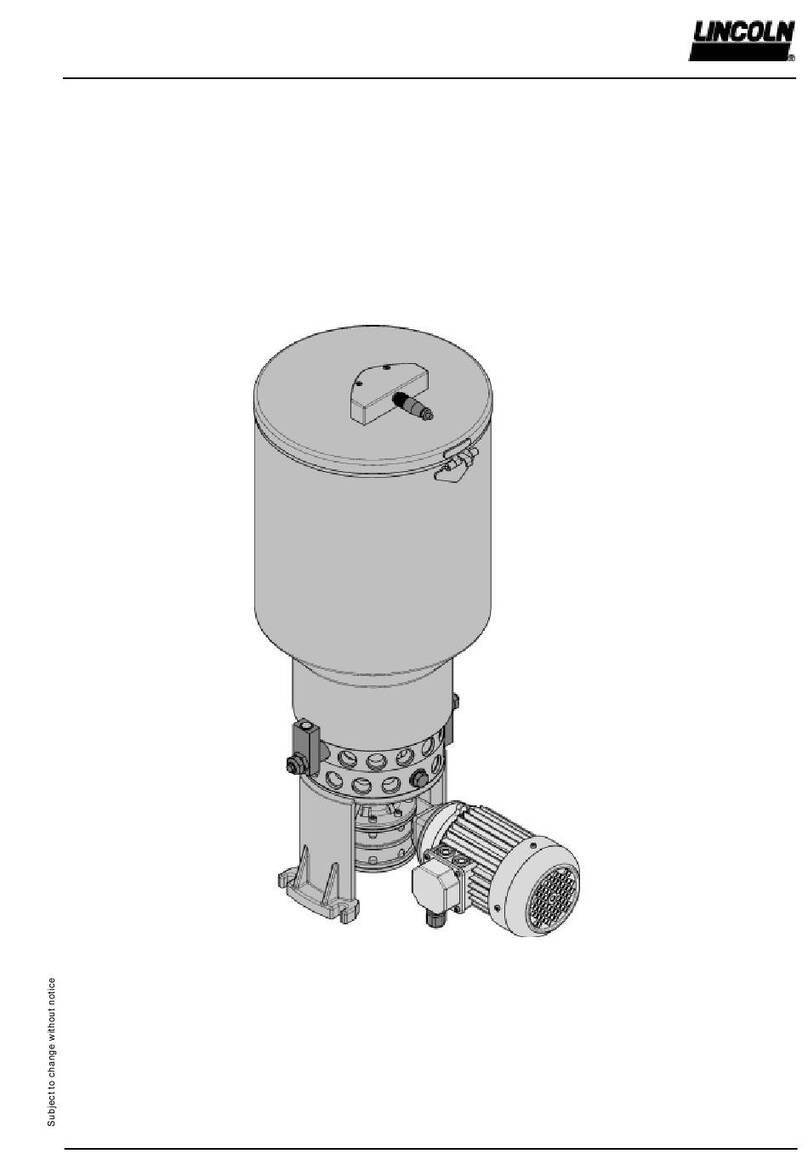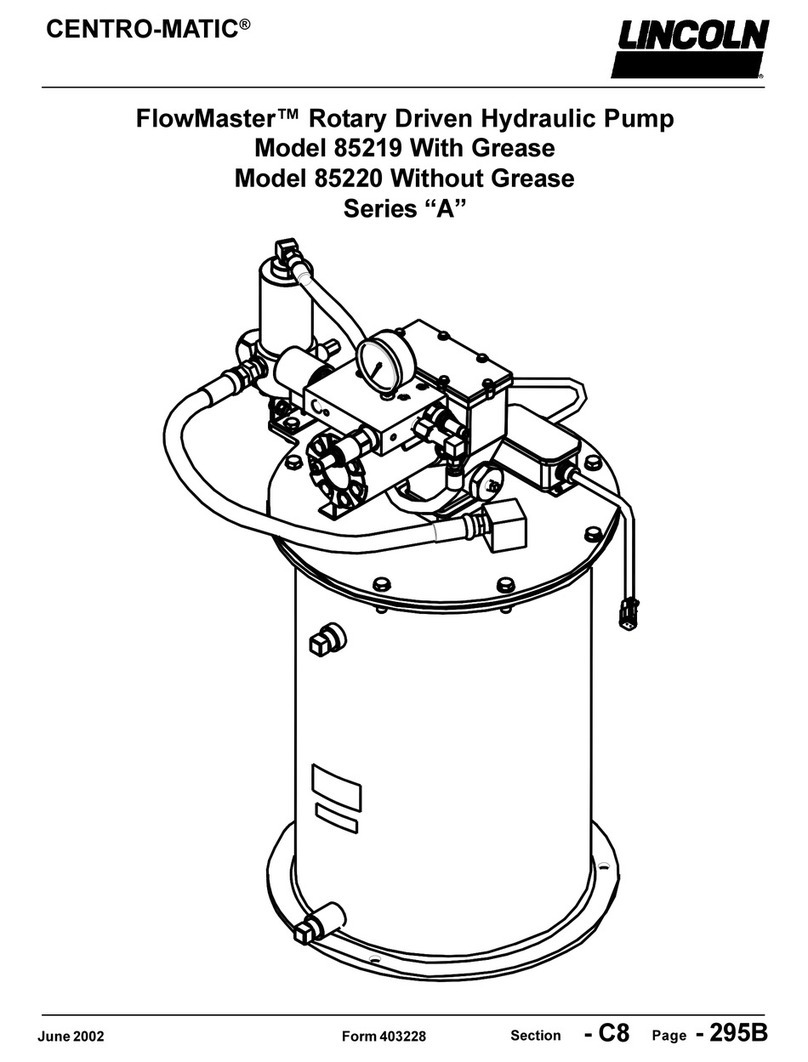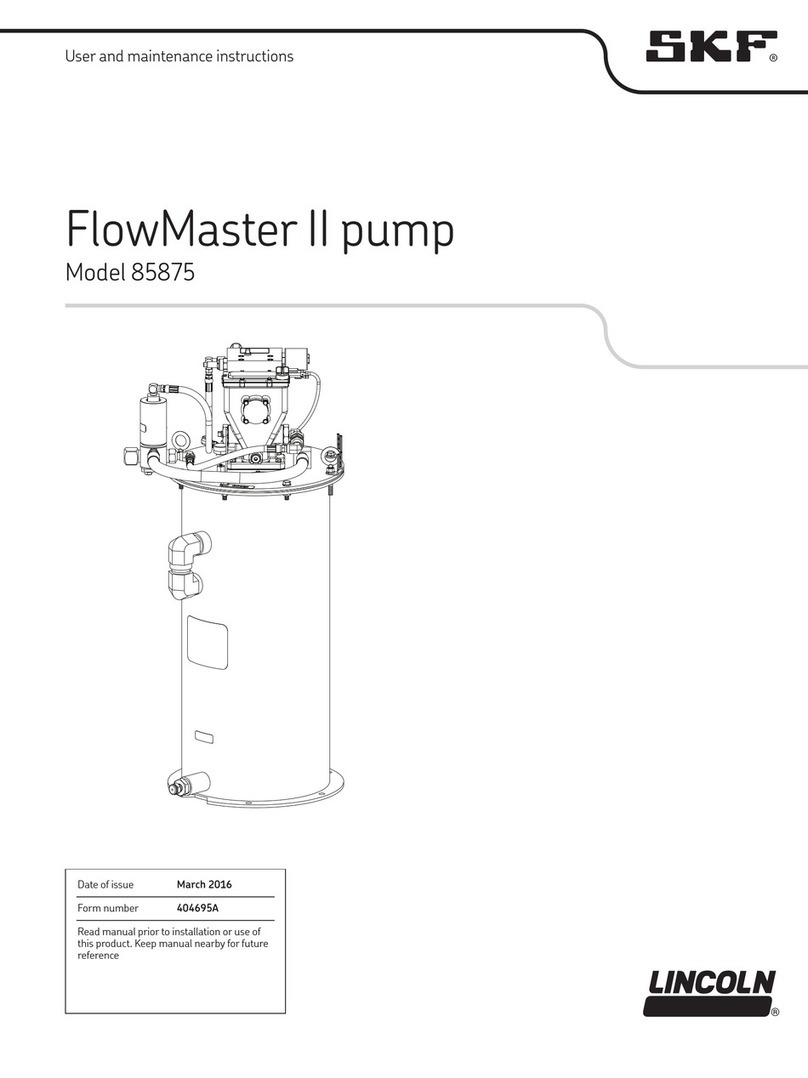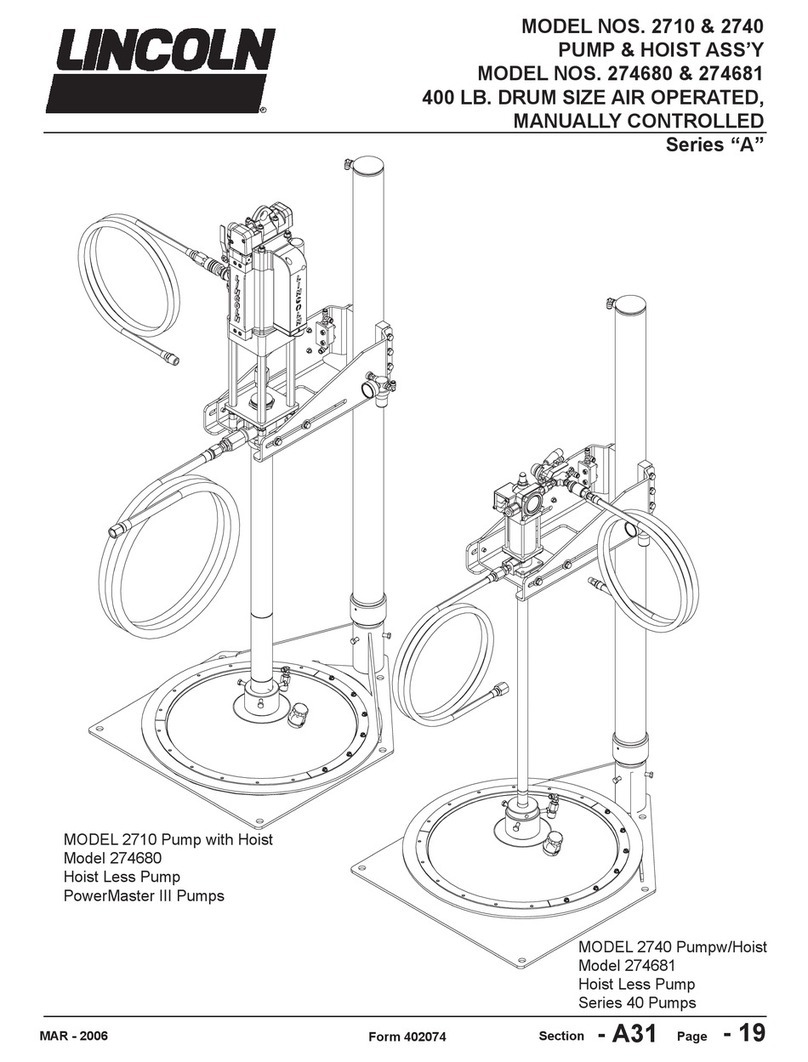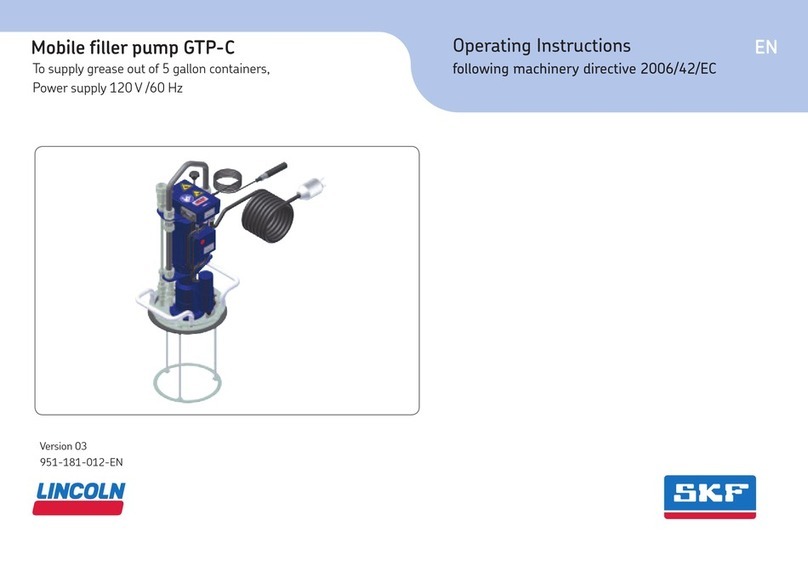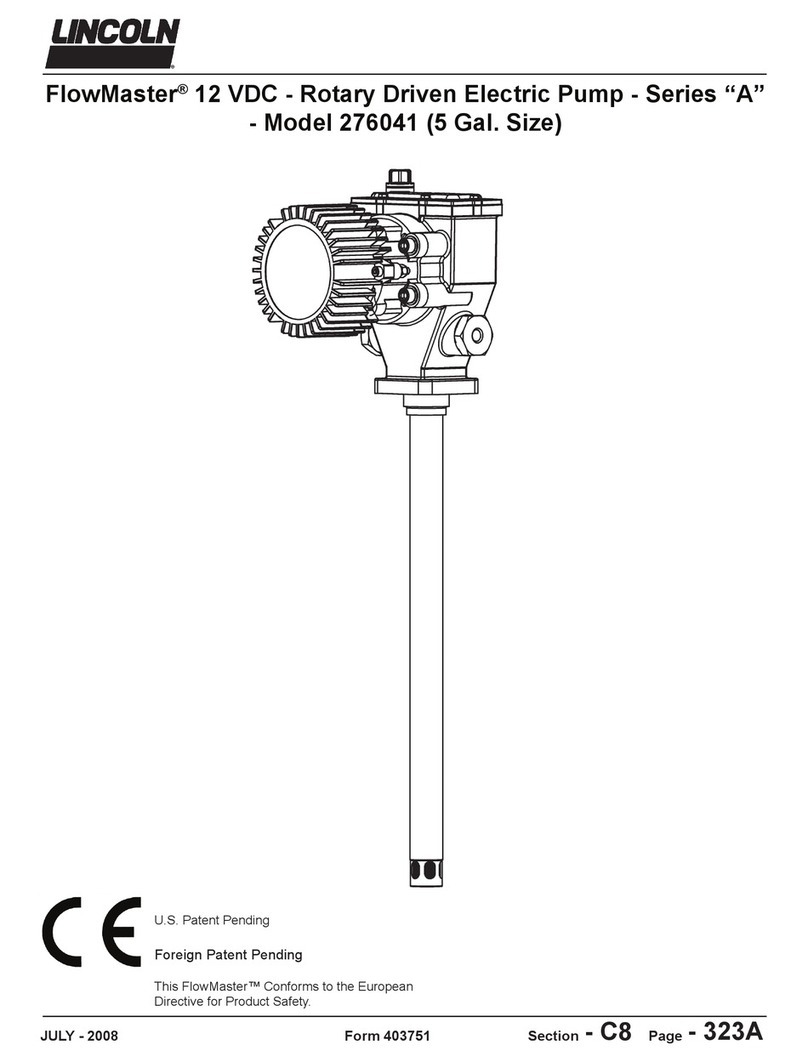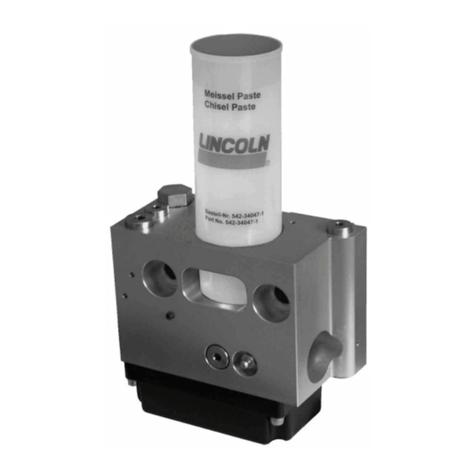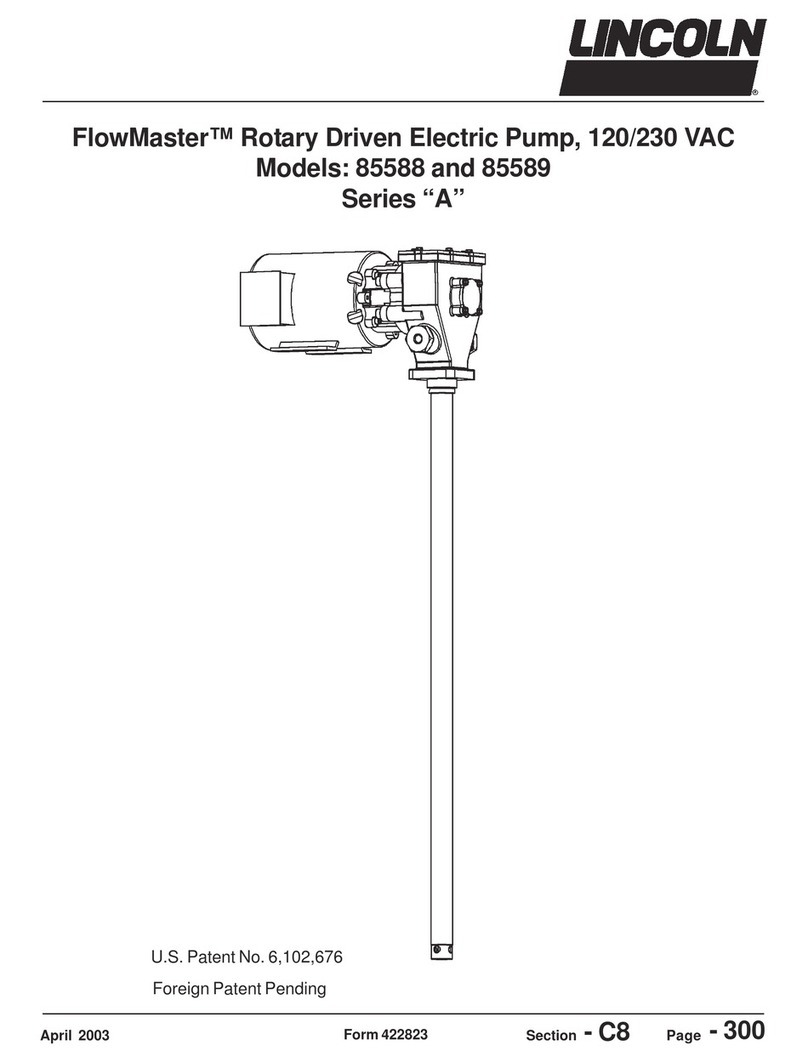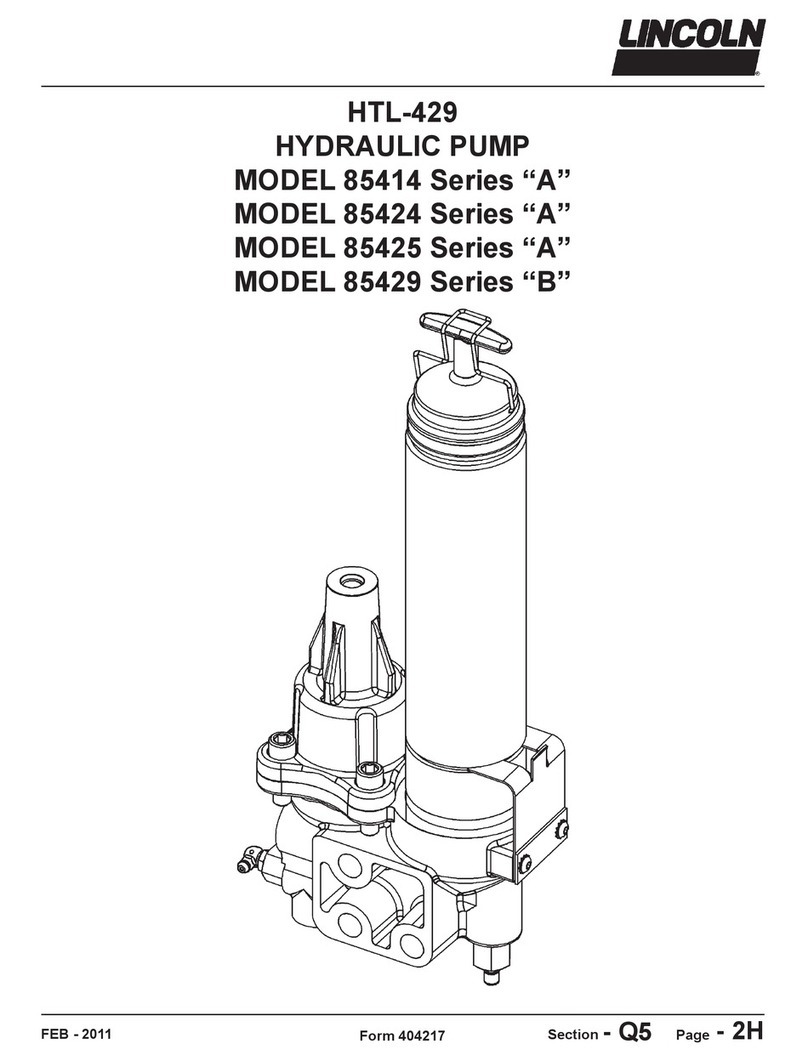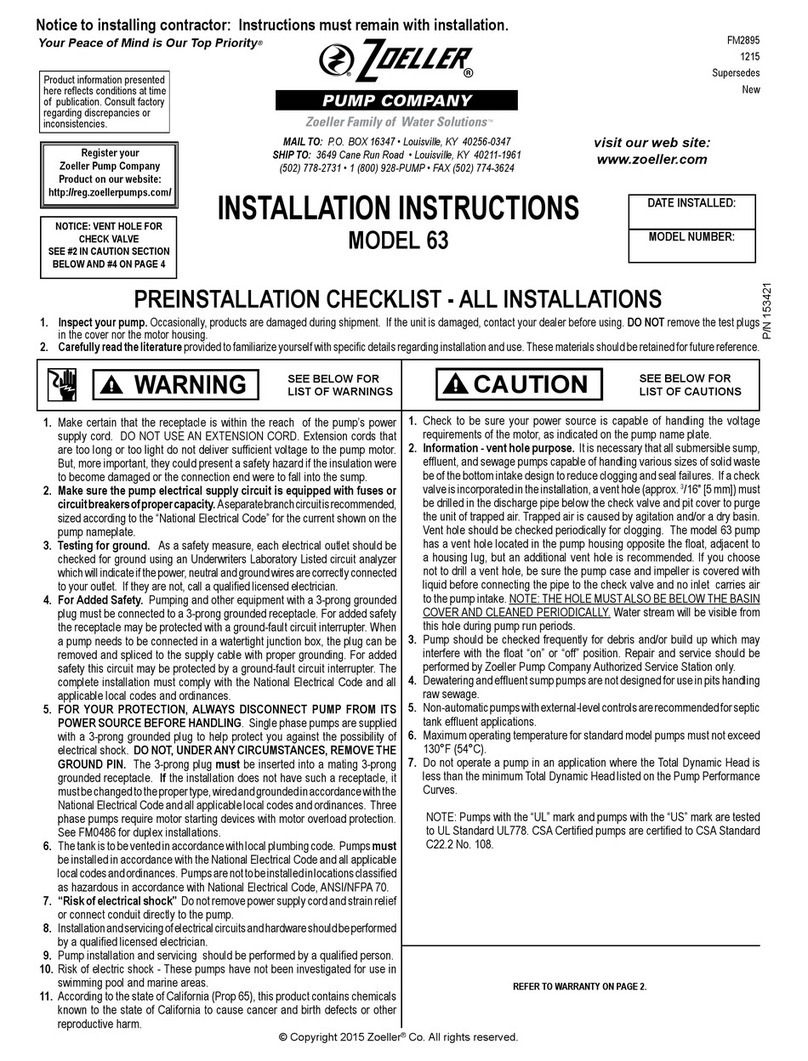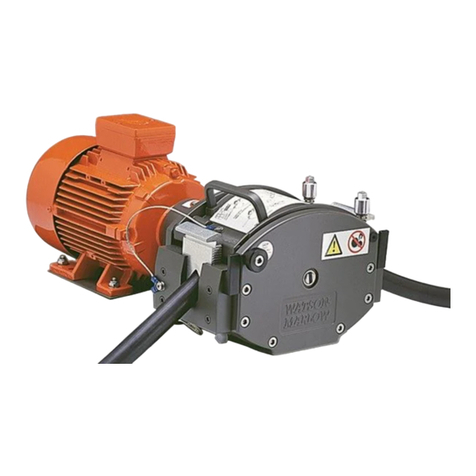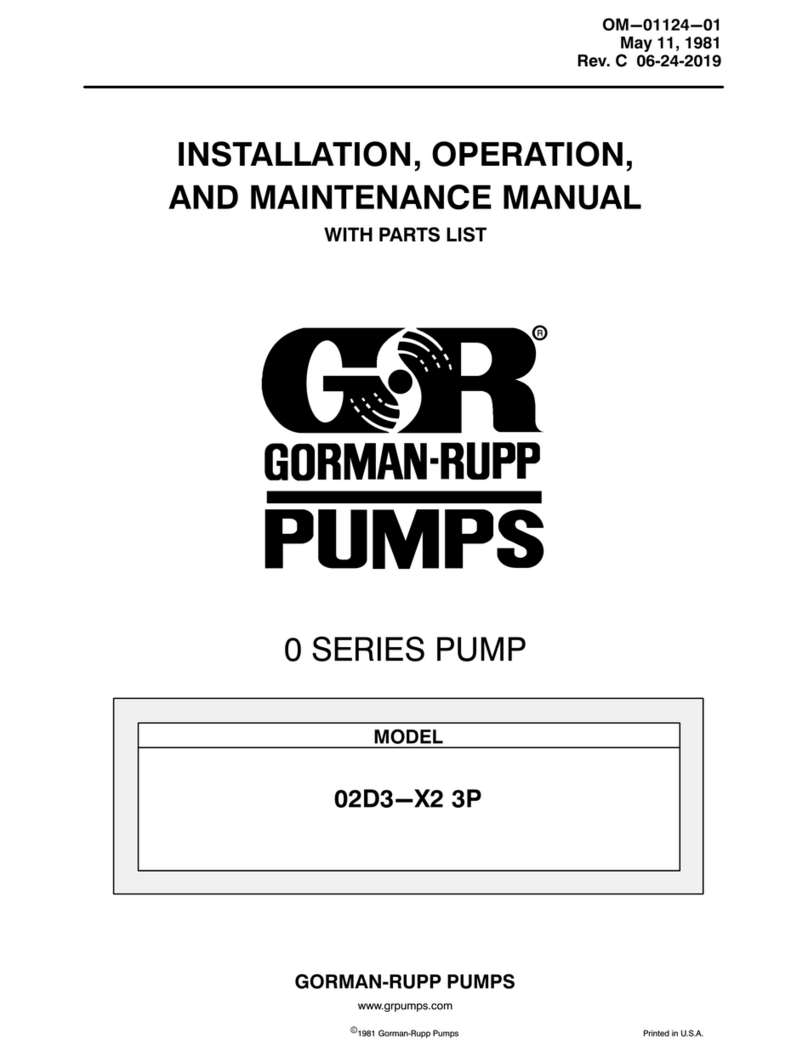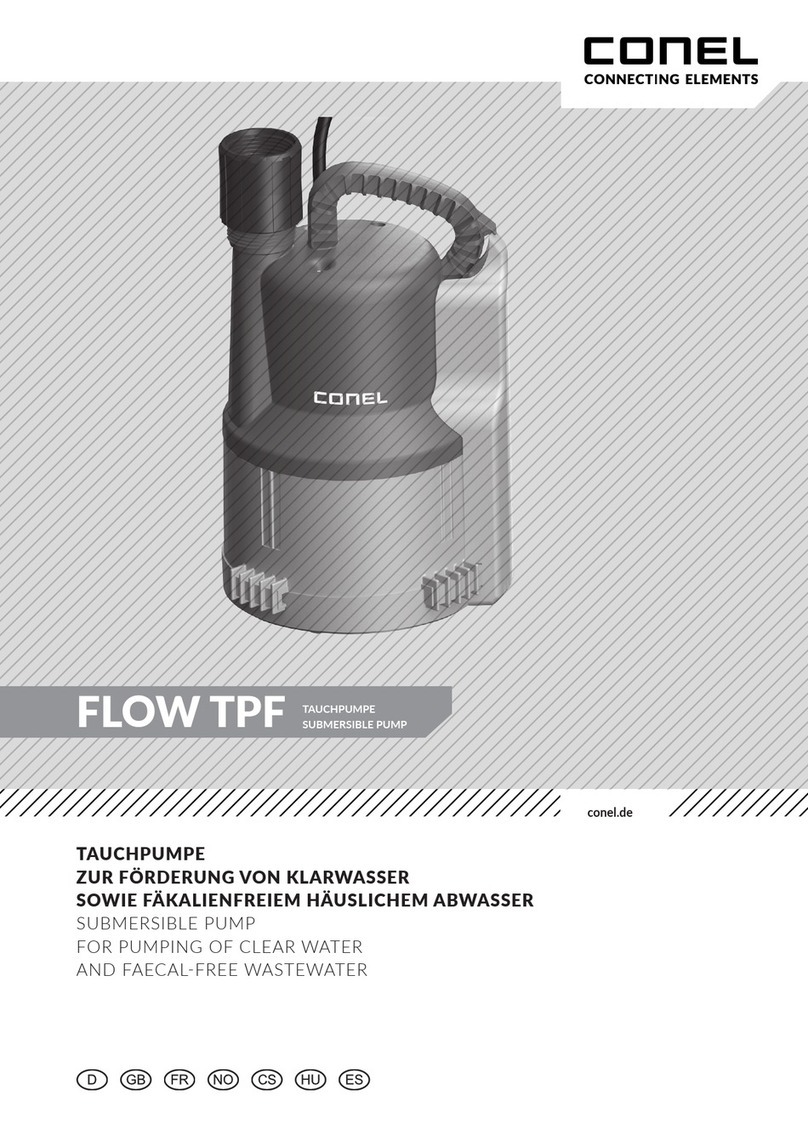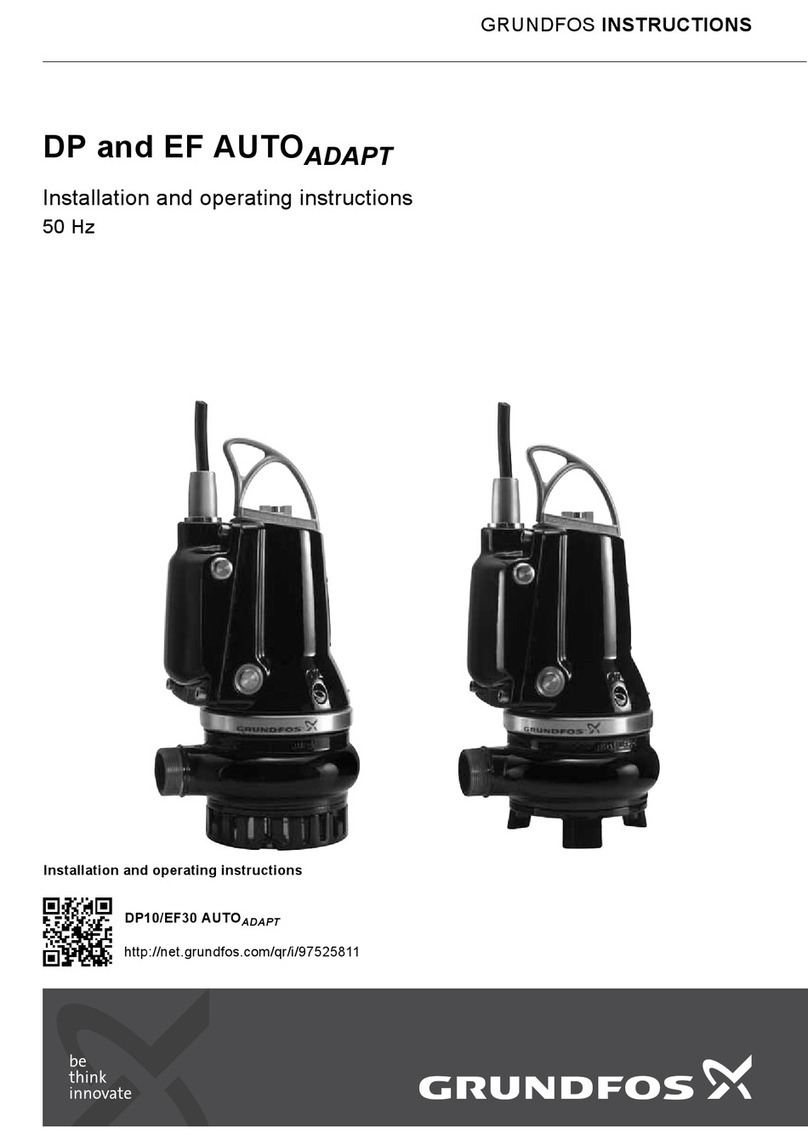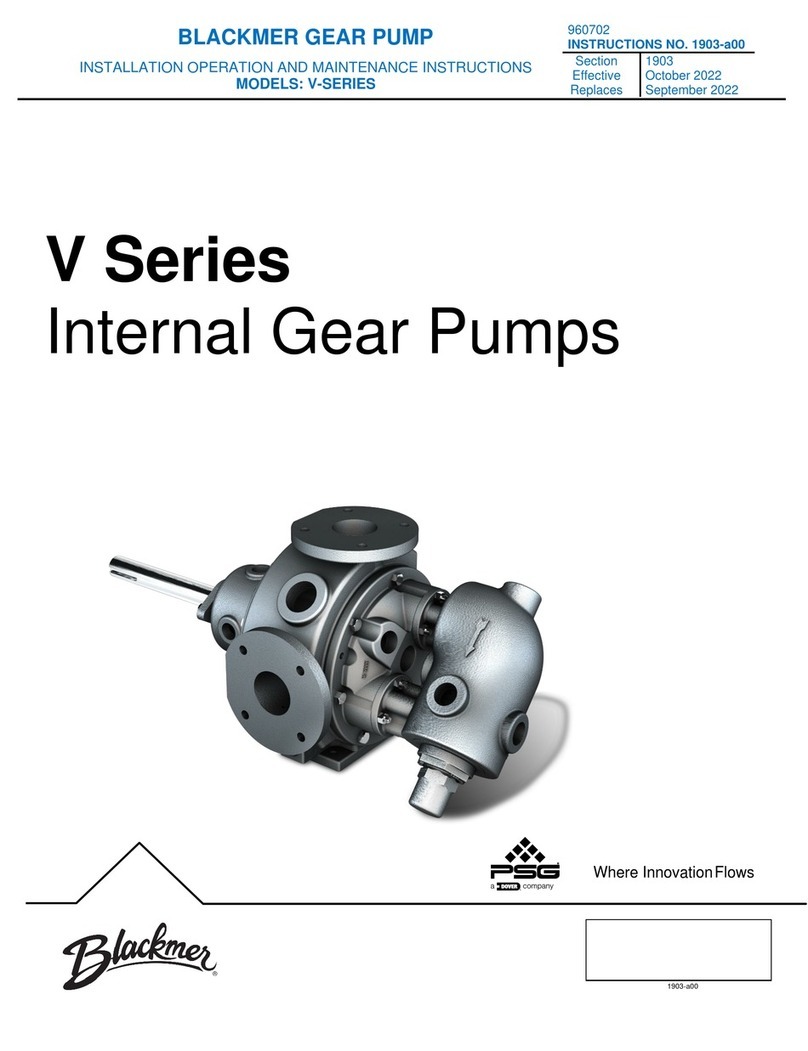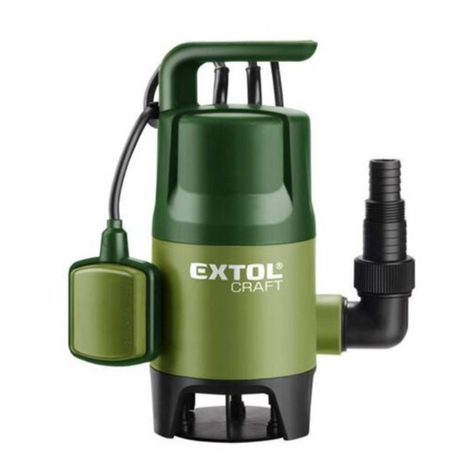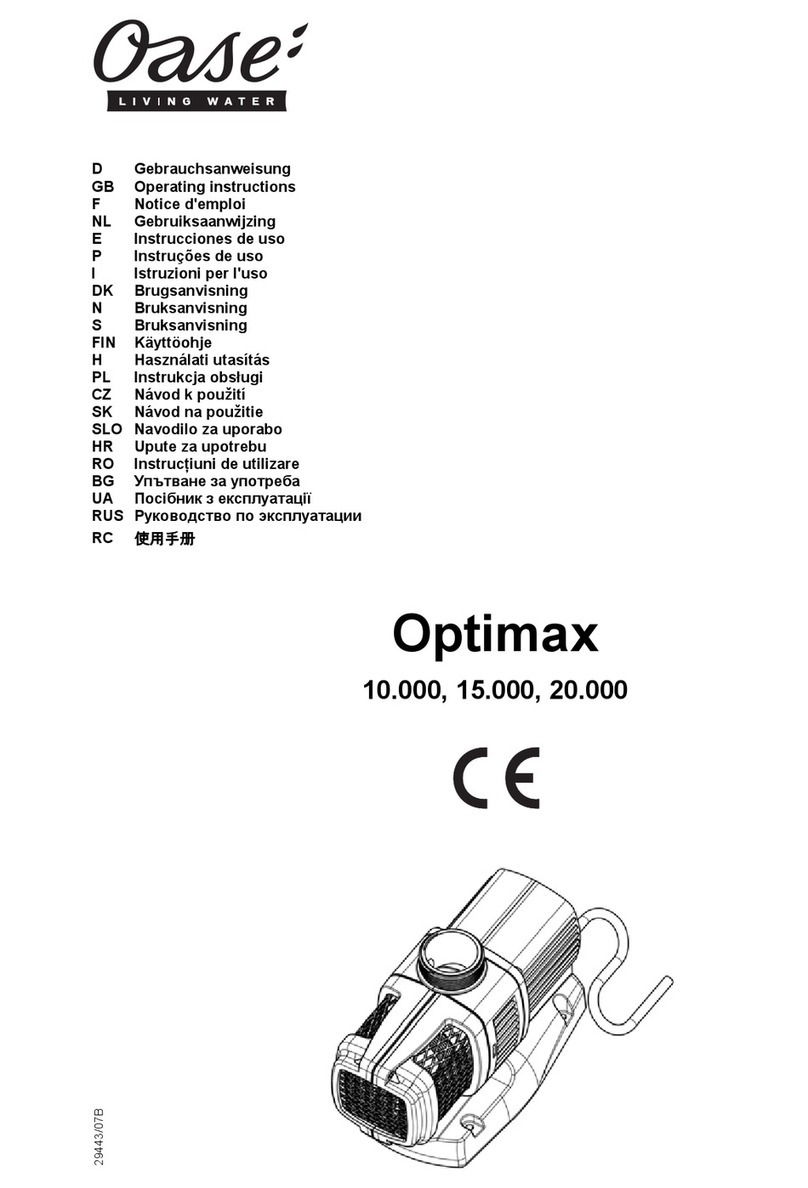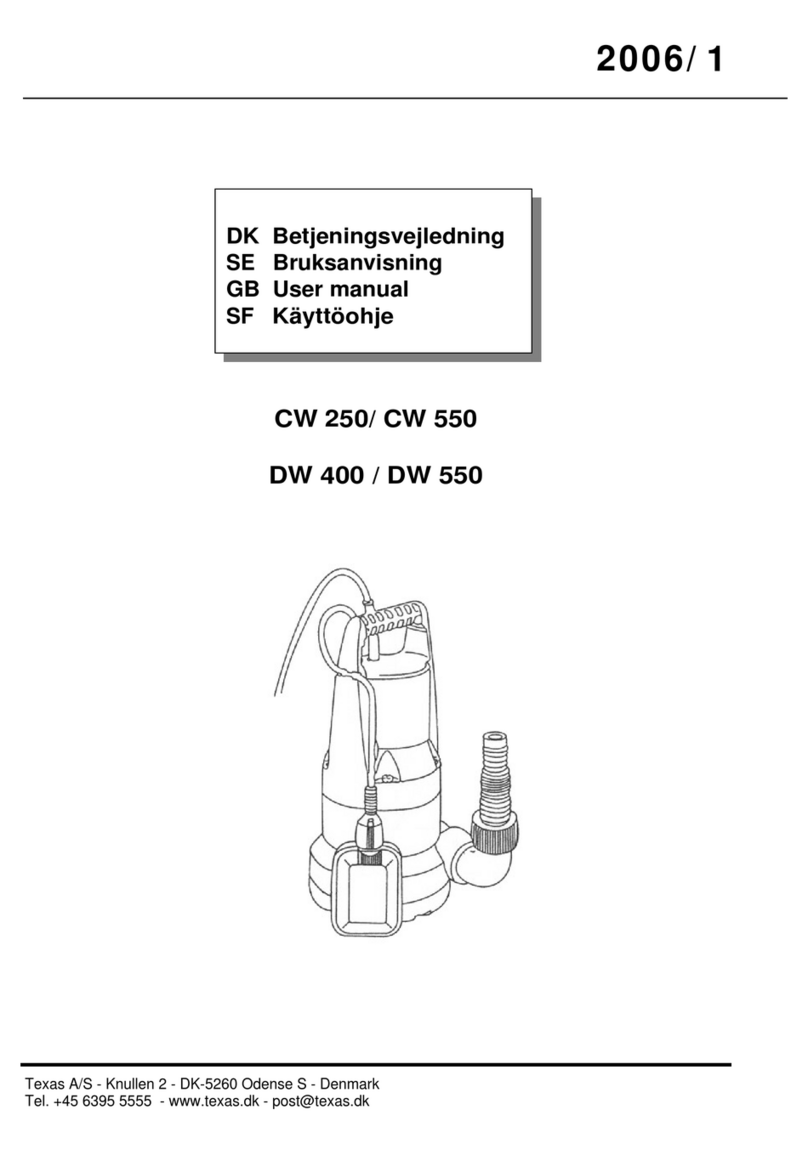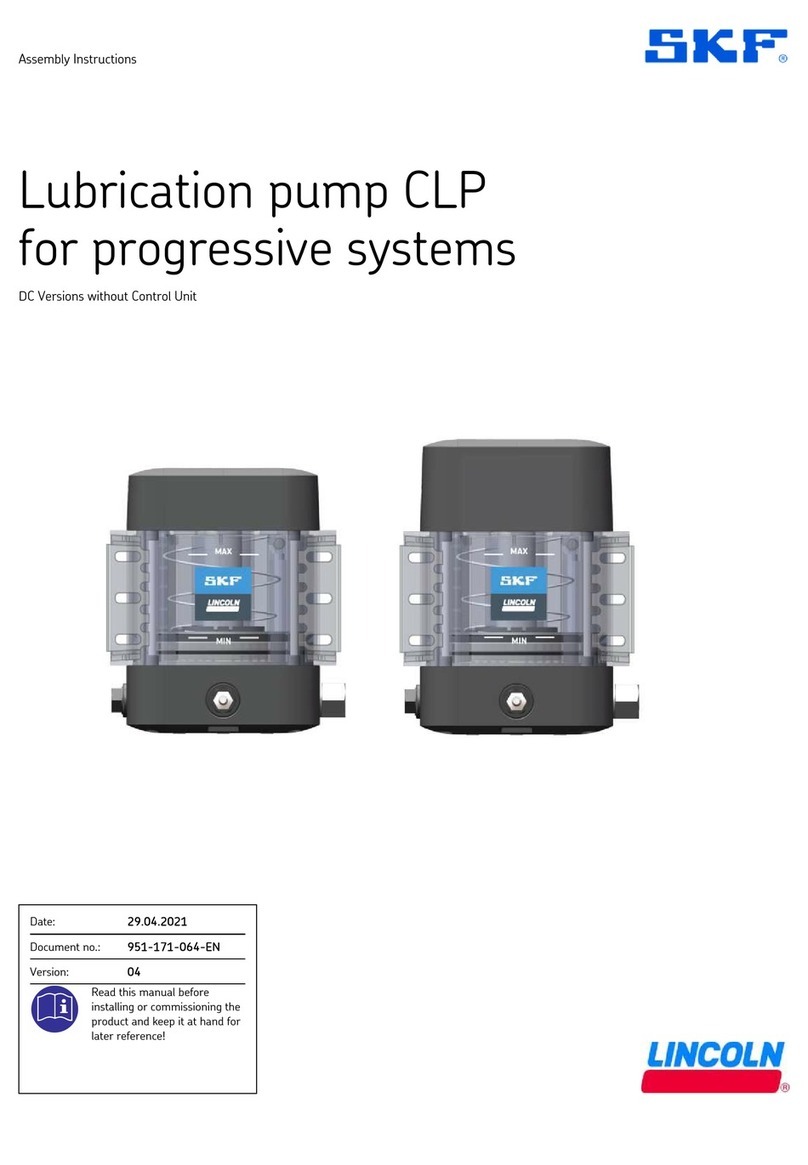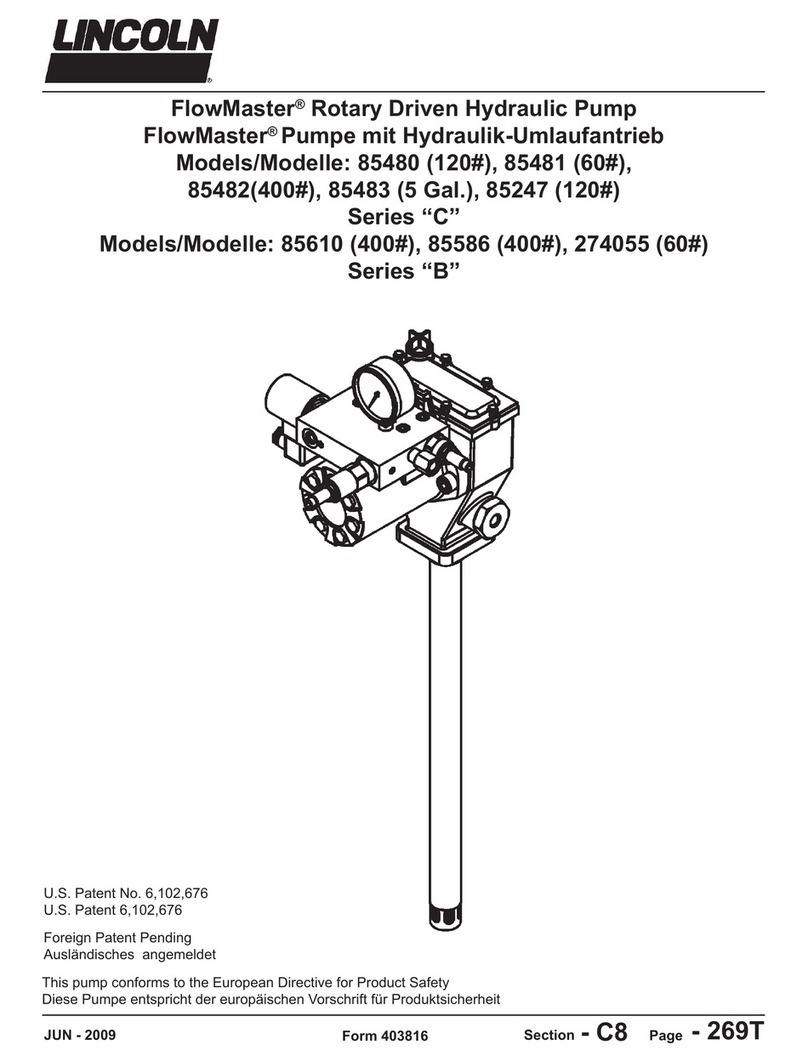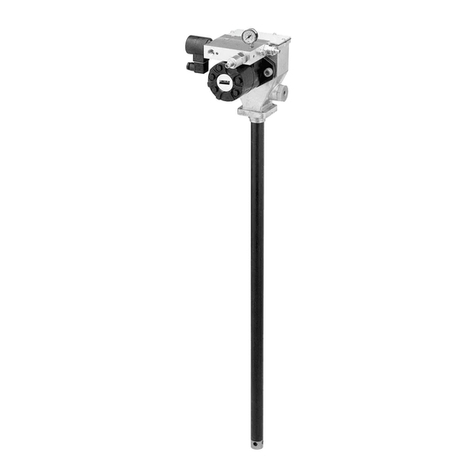
520-280-000 5/00 Form #402975 Page 5
PRINCIPLE OF PUMP OPERATION
This ball type check valve pump is
poweredbycompressedairandisa1:1
ratio design. The inner side of one
diaphragm chamber is alternately
pressurized while simultaneously
exhaustingtheotherinnerchamber.This
causes the diaphragms, which are
connected by a common rod secured
by plates to the centers of the
diaphragms,to move inareciprocating
action.(Asonediaphragmperformsthe
discharge stroke the other diaphragm
is pulled to perform the suction stroke
in the opposite chamber.) Air pressure
is applied over the entire inner surface
of the diaphragm while liquid is
dischargedfromtheoppositesideof the
diaphragm.Thediaphragm operates in
a balanced condition during the
dischargestrokewhichallowsthepump
tobeoperated at discharge headsover
200feet (61 meters)ofwater.
For maximum diaphragm life, keep
the pump as close to the liquid being
pumped as possible. Positive suction
headinexcessof10feetofliquid(3.048
meters) may require a back pressure
regulating device to maximize
diaphragmlife.
Alternate pressurizing and
exhausting of the diaphragm chamber
isperformedby an externallymounted,
pilot operated, four way spool type air
distributionvalve.Whenthespoolshifts
to one end of the valve body, inlet
pressure is applied to one diaphragm
chamber and the other diaphragm
chamber exhausts. When the spool
shifts to the opposite end of the valve
body, the pressure to the chambers is
reversed.Theairdistributionvalvespool
is moved by a internal pilot valve which
alternately pressurizes one end of the
air distribution valve spool while
exhaustingtheotherend.Thepilotvalve
is shifted at each end of the diaphragm
stroke when a actuator plunger is
contacted by the diaphragm plate. This
actuatorplungerthenpushesthe end of
the pilot valve spool into position to
activatetheairdistribution valve.
The chambers are connected with
manifolds with a suction and discharge
check valve for each chamber,
maintainingflowinonedirectionthrough
thepump.
INSTALLATION AND START-UP
Locate the pump as close to the
productbeingpumpedaspossible.Keep
the suction line length and number of
fittingstoa minimum. Do notreducethe
suctionline diameter.
For installations of rigid piping, short
sectionsofflexiblehoseshouldbeinstalled
between the pump and the piping. The
flexible hose reduces vibration and strain
to the pumping system. A surge
suppressor is recommended to further
reducepulsationinflow.
AIR SUPPLY
Air supply pressure cannot exceed
100 psi (7 bar). Connect the pump air
inlettoanairsupplyofsufficient capacity
and pressure required for desired
performance. When the air supply line
is solid piping, use a short length of
flexible hose not less than ½" (13mm)
in diameter between the pump and the
pipingtoreducestraintothepiping.The
weight of the air supply line, regulators
and filters must be supported by some
meansotherthantheairinletcap.Failure
to provide support for the piping may
resultindamagetothepump.Apressure
regulating valve should be installed to
insure air supply pressure does not
exceedrecommended limits.
AIRVALVE LUBRICATION
Theairdistributionvalveandthepilot
valvearedesignedtooperateWITHOUT
lubrication.Thisisthepreferredmodeof
operation. There may be instances of
personal preference or poor quality air
supplies when lubrication of the
compressed air supply is required. The
pump air system will operate with
properly lubricated compressed air
supply. Proper lubrication requires the
useof an airlinelubricatorsetto deliver
onedropofSAE10non-detergentoilfor
every20SCFM(9.4liters/sec.)ofairthe
pumpconsumesatthepointofoperation.
Consult the pump’s published
PerformanceCurvetodetermine this.
AIR LINE MOISTURE
Water in the compressed air supply
can create problems such as icing or
freezing of the exhaust air, causing the
pump to cycle erratically or stop
operating. Water in the air supply can
be reduced by using a point-of-use air
dryertosupplementtheuser’sairdrying
equipment. This device removes water
from the compressed air supply and
alleviatestheicingorfreezingproblems.
AIR INLET AND PRIMING
To start thepump,opentheair valve
approximately ½ to ¾ turn. After the
pumpprimes,theairvalvecanbeopened
toincreaseairflowasdesired. Ifopening
thevalveincreasescyclingrate,butdoes
not increase the rate of flow, cavitation
hasoccurred.Thevalveshouldbeclosed
slightly to obtain the most efficient air
flowto pump flowratio.
BETWEEN USES
Whenthepumpisusedformaterials
that tend to settle out or solidify when
notinmotion,thepumpshouldbeflushed
after each use to prevent damage.
(Productremaininginthepumpbetween
uses could dry out or settle out. This
could cause problems with the
diaphragmsandcheckvalvesat restart.)
Infreezingtemperaturesthepumpmust
becompletely drainedbetweenuses in
all cases.






















